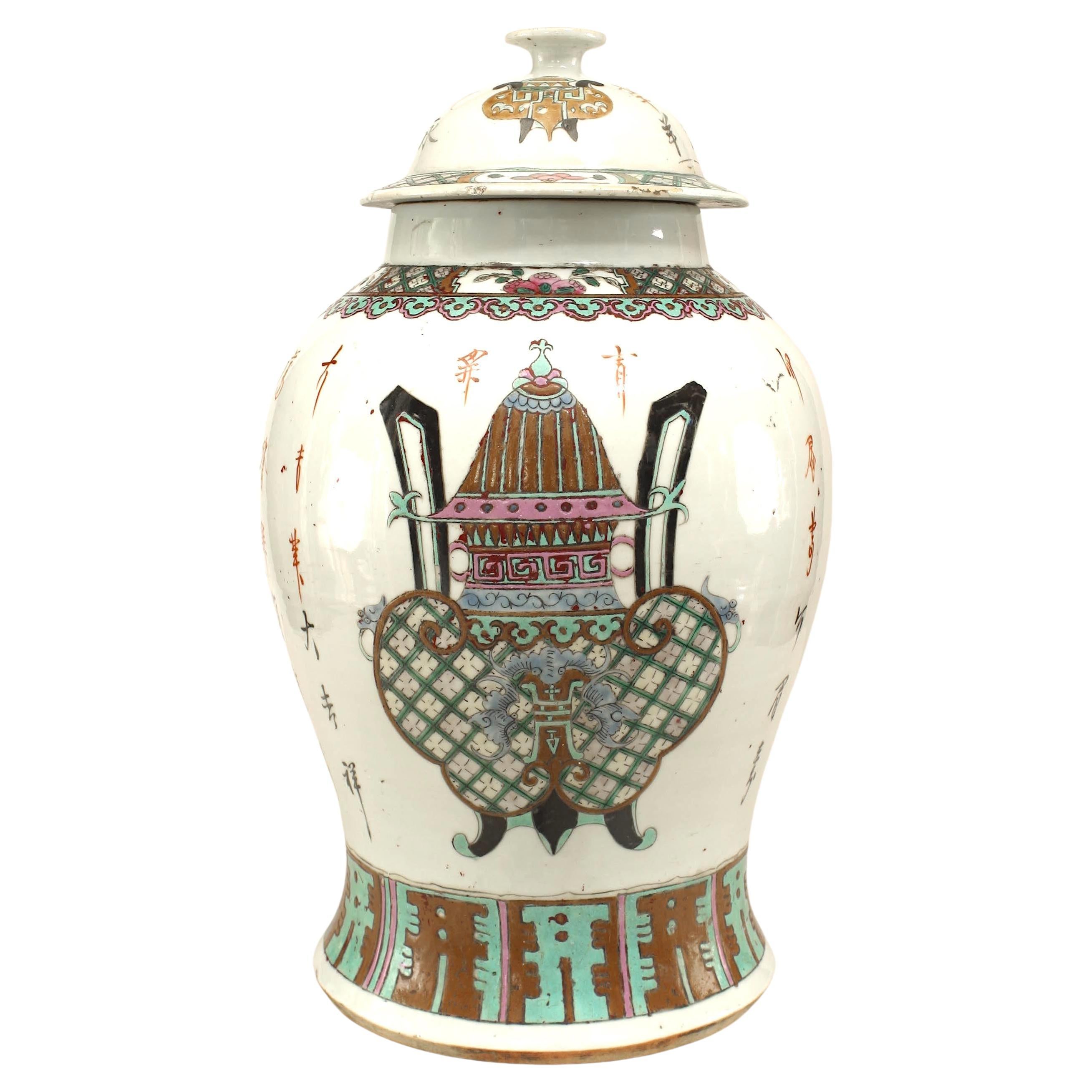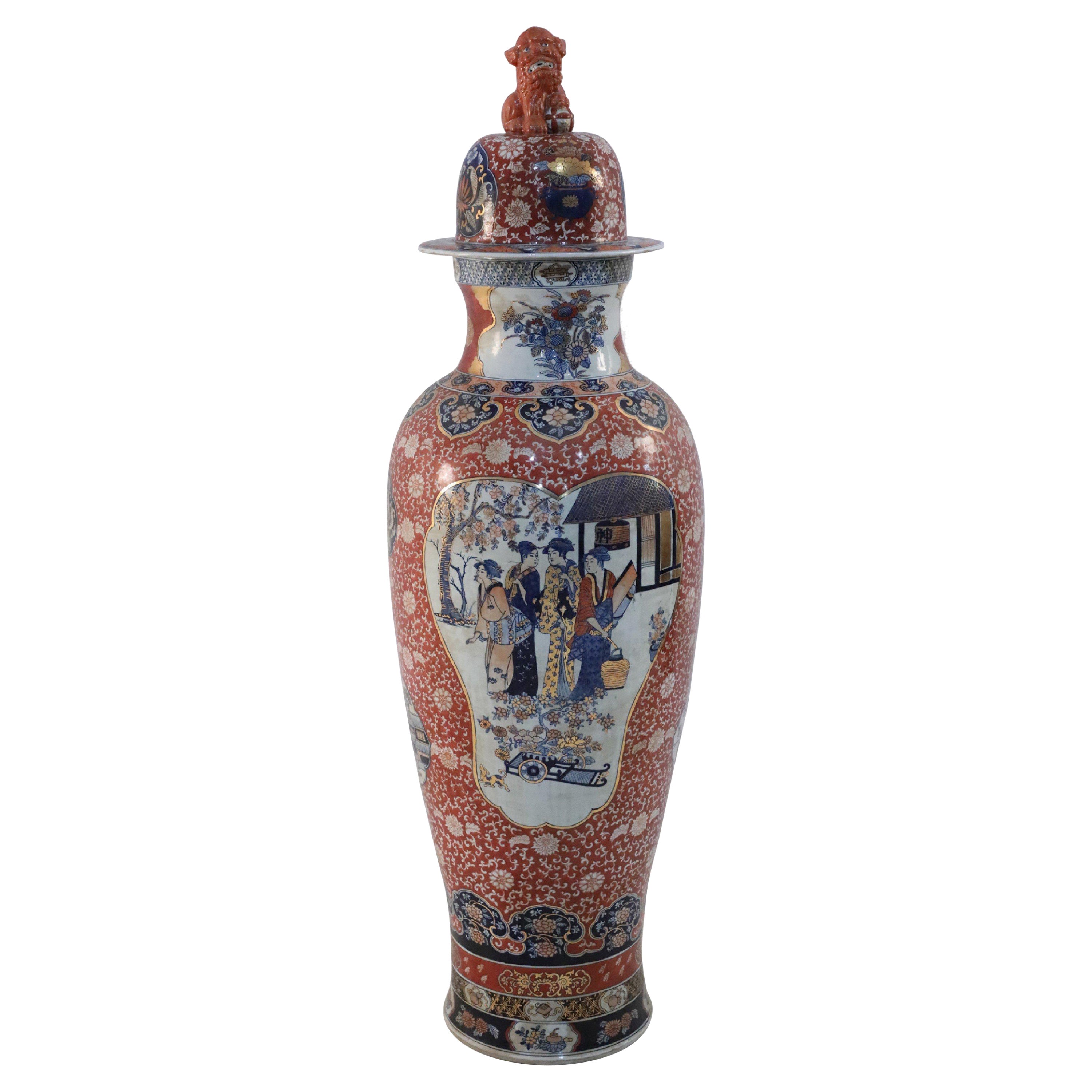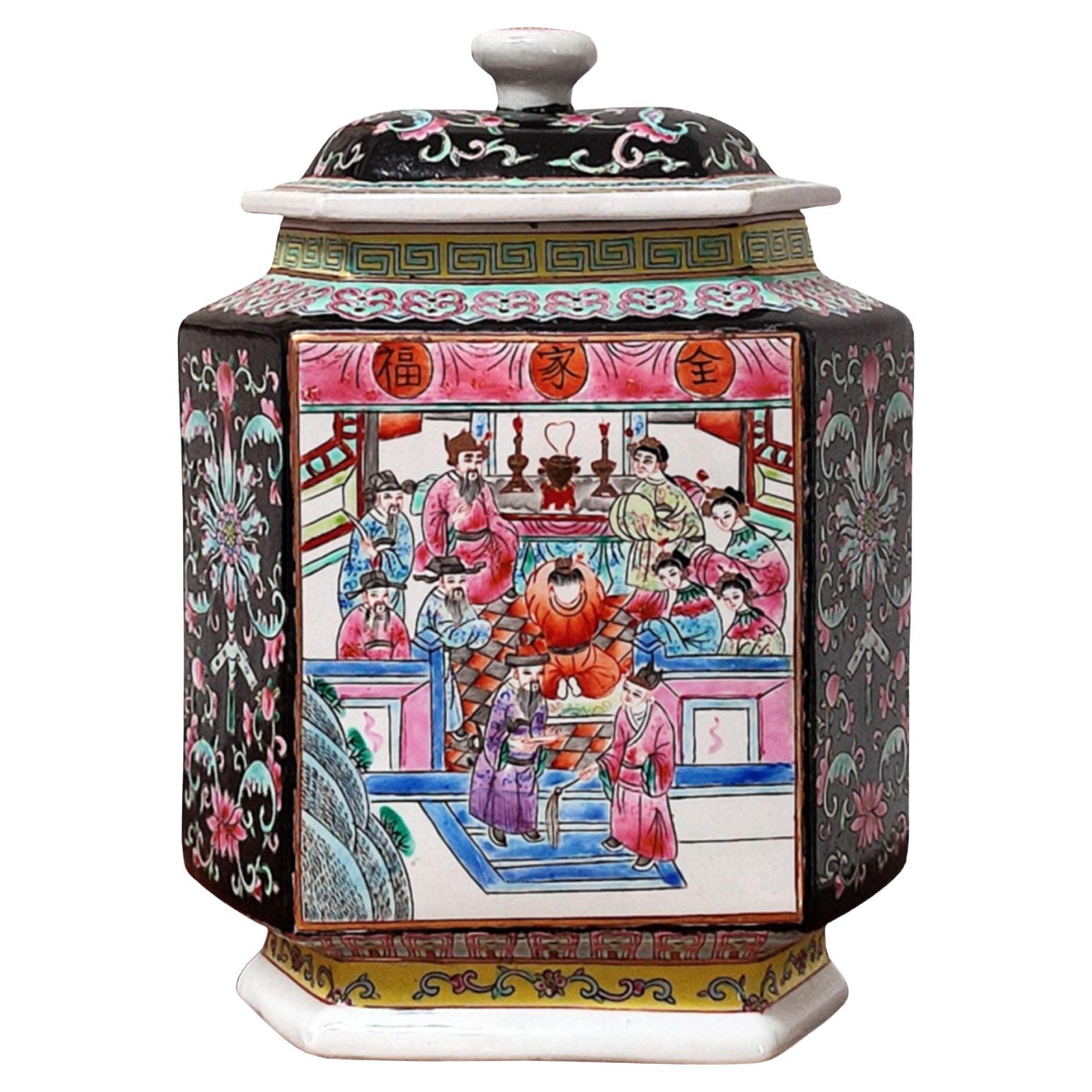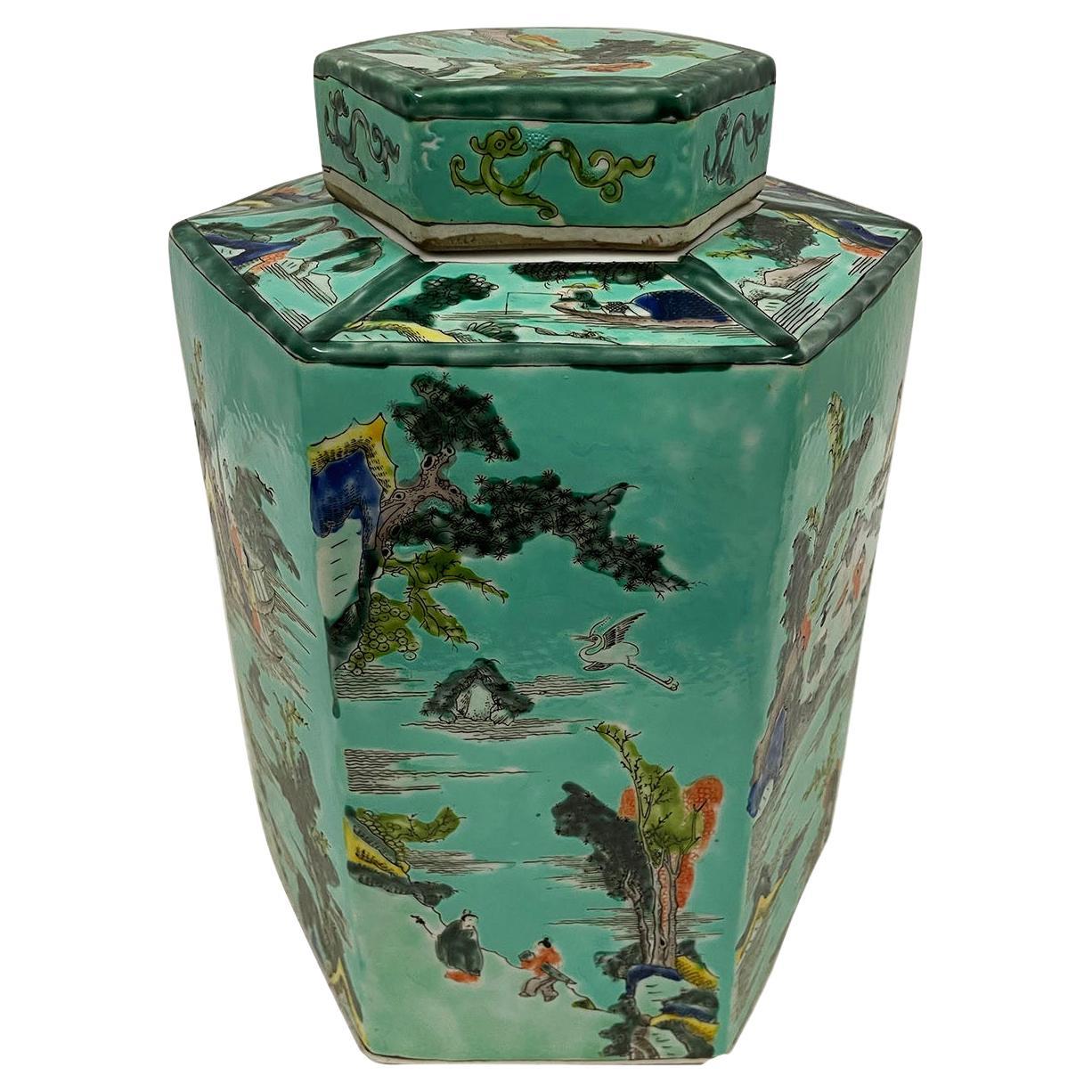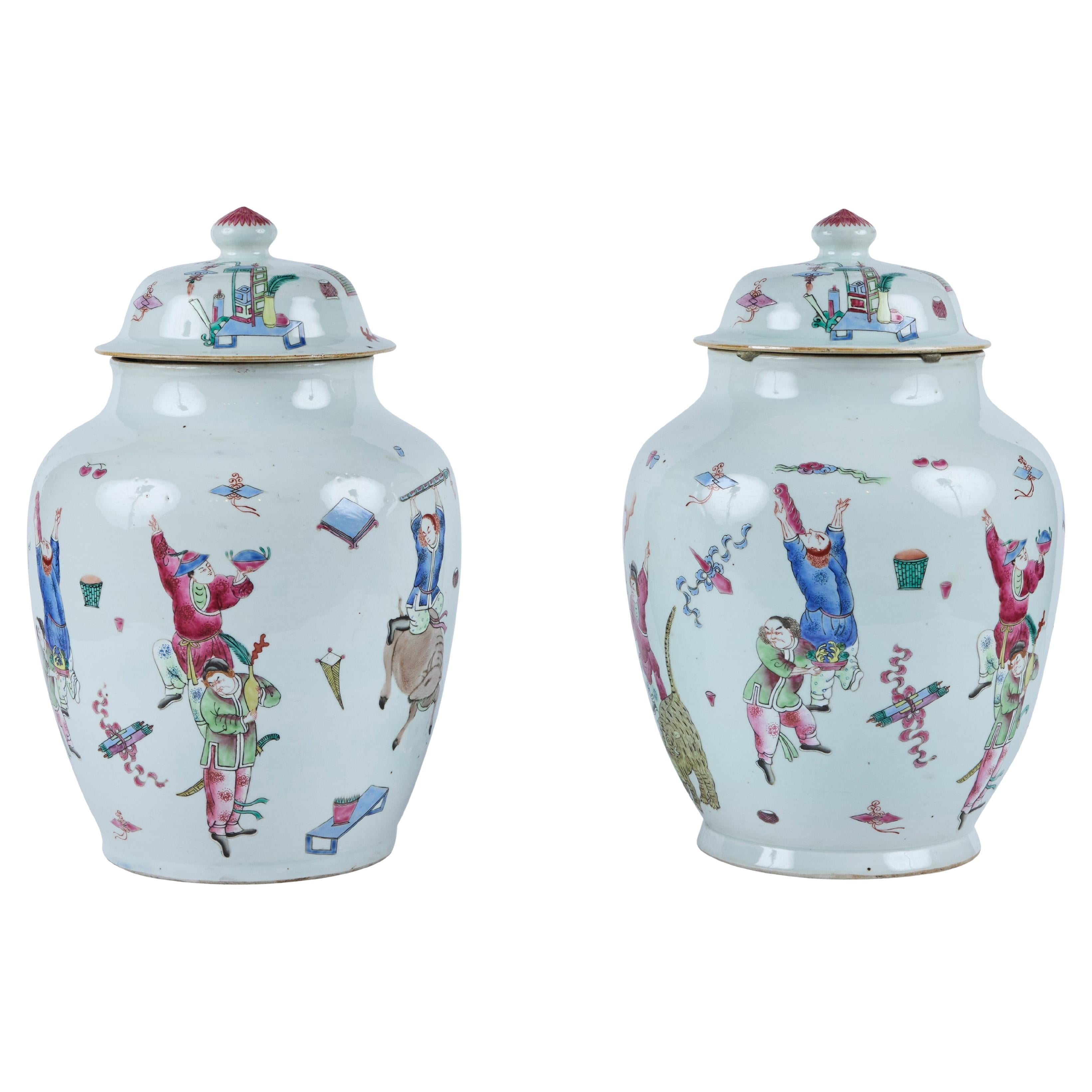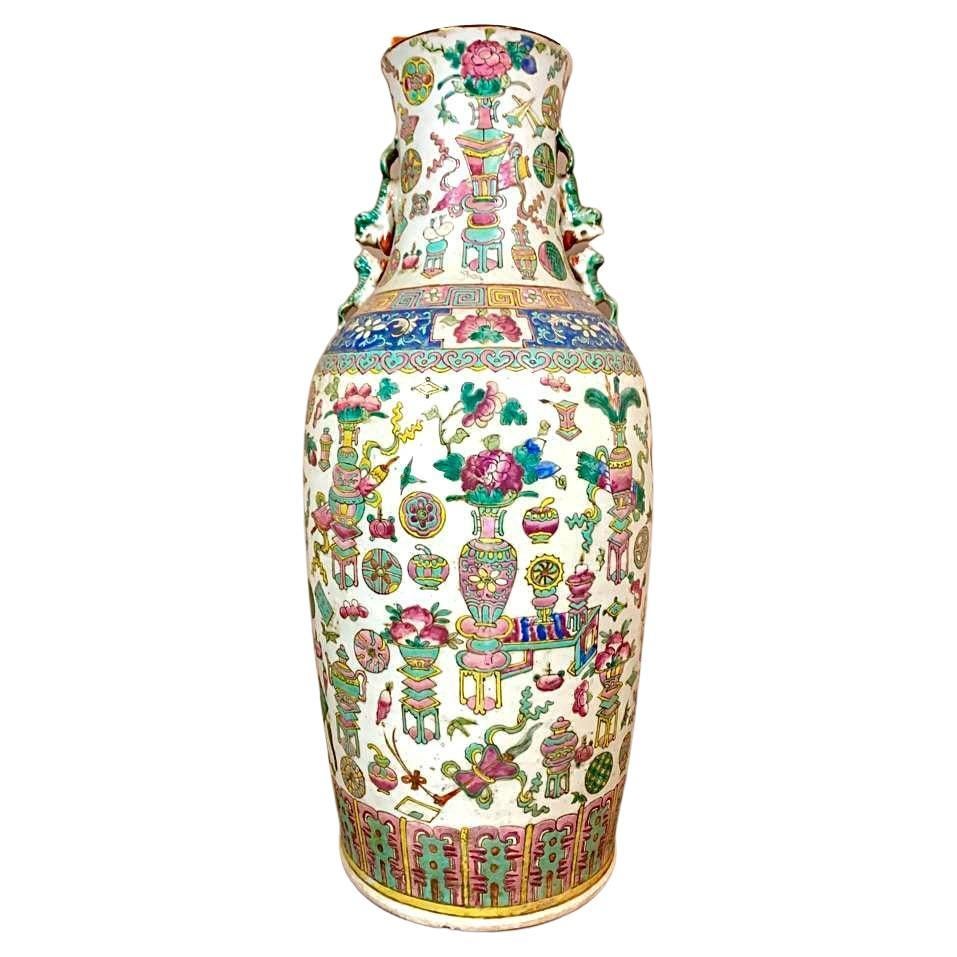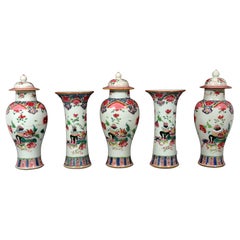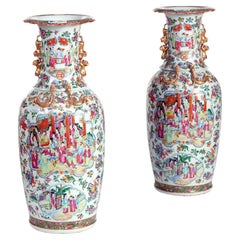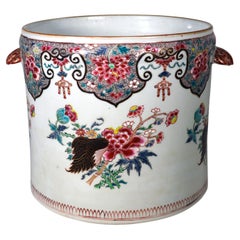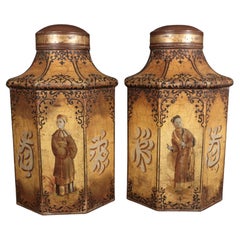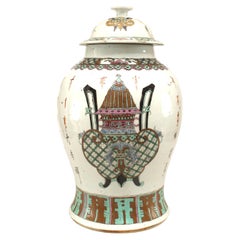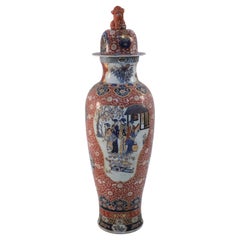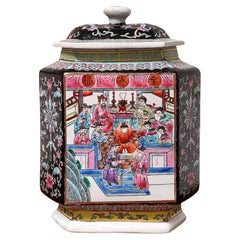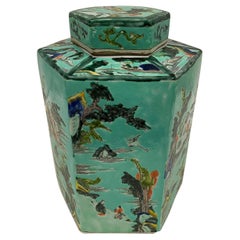Items Similar to Chinese Export Porcelain Canton Jar decorated with Panels of Chinese Figures
Want more images or videos?
Request additional images or videos from the seller
1 of 6
Chinese Export Porcelain Canton Jar decorated with Panels of Chinese Figures
$8,000
£6,132.57
€7,019.24
CA$11,427.67
A$12,532.64
CHF 6,493.16
MX$150,589.54
NOK 81,737.50
SEK 76,712.98
DKK 52,440.24
About the Item
Chinese Export Porcelain Large Canton Temple Jar,
American Market,
Daoguang,
First Quarter 19th Century
A handsome Chinese Export Canton Large Temple Jar, produced for the American market during the Daoguang period in the first quarter of the 19th century. This piece is a testament to the flourishing trade between China and the United States during this era, with porcelain being a significant and highly prized commodity.
The jar is distinguished by its very finely painted design, a hallmark of the superior quality export wares of the period. The body is adorned with panels featuring meticulously rendered landscape and figural scenes. These panels depict courtly life, with male and female figures attired in vibrant famille rose enamels, set against lush garden backdrops. The intricate borders that frame these scenes further enhance the jar's decorative appeal, showcasing the skilled craftsmanship of the Canton workshops. The famille rose palette, with its characteristic opaque pinks and soft hues, was exceptionally popular in the West and allowed for a greater degree of naturalism and detail in the painted decoration.
Of particular note is the presence of a gilded monogram, "WFA," set within an oval white panel on each side of the jar. The inclusion of a personalized monogram is a definitive indication that this vessel was a special commission, crafted expressly for a prominent American client. While the identity of the individual or family bearing these initials is not presently known, such bespoke pieces were a luxury afforded by the affluent and are a fascinating reflection of the American elite's engagement with the global market of the early 19th century. This temple jar stands as a significant example of the cultural and commercial exchange that defined the China Trade.
Dimensions: 26 inches high x 14 inch diameter.
(Ref: NY10837-iuma)
- Dimensions:Height: 26 in (66.04 cm)Diameter: 14 in (35.56 cm)
- Style:Chinese Export (Of the Period)
- Materials and Techniques:
- Place of Origin:
- Period:
- Date of Manufacture:1840
- Condition:Repaired: chip and small hairline on neck invisibly repaired. Wear consistent with age and use.
- Seller Location:Downingtown, PA
- Reference Number:Seller: NY10837-iuma1stDibs: LU861045984552
About the Seller
5.0
Recognized Seller
These prestigious sellers are industry leaders and represent the highest echelon for item quality and design.
Platinum Seller
Premium sellers with a 4.7+ rating and 24-hour response times
Established in 1916
1stDibs seller since 2009
425 sales on 1stDibs
Typical response time: 1 hour
Associations
The Art and Antique Dealers League of AmericaAntiques Associations Members
- ShippingRetrieving quote...Shipping from: Downingtown, PA
- Return Policy
Authenticity Guarantee
In the unlikely event there’s an issue with an item’s authenticity, contact us within 1 year for a full refund. DetailsMoney-Back Guarantee
If your item is not as described, is damaged in transit, or does not arrive, contact us within 7 days for a full refund. Details24-Hour Cancellation
You have a 24-hour grace period in which to reconsider your purchase, with no questions asked.Vetted Professional Sellers
Our world-class sellers must adhere to strict standards for service and quality, maintaining the integrity of our listings.Price-Match Guarantee
If you find that a seller listed the same item for a lower price elsewhere, we’ll match it.Trusted Global Delivery
Our best-in-class carrier network provides specialized shipping options worldwide, including custom delivery.More From This Seller
View AllChinese Export Famille Rose Porcelain Garniture
Located in Downingtown, PA
Chinese Export Five Piece Famille Rose Porcelain Garniture,
circa 1730-1750
The garniture of five Chinese Export porcelain vases consists of three covered baluster vases and two ...
Category
Antique Mid-18th Century Chinese Chinese Export Vases
Materials
Porcelain
$12,400 / set
Chinese Export Porcelain Large Rose Medallion Vases
Located in Downingtown, PA
Chinese export porcelain large rose medallion vases,
Circa 1850-65
The early rose medallion/rose mandarin porce...
Category
Antique Mid-19th Century Chinese Chinese Export Vases
Materials
Porcelain
18th-century Chinese Export Porcelain Large Famille Rose Cachepot
Located in Downingtown, PA
Chinese Export Porcelain Famille Rose Cachepot,
Circa 1750-60
The very large Chinese Export porcelain cachepot is of cylindrical form with an ...
Category
Antique Mid-18th Century Chinese Chinese Export Planters, Cachepots and ...
Materials
Porcelain
Chinoiserie Tôle Large Tea Canisters with Chinese Figures
Located in Downingtown, PA
Chinoiserie Tôle Large Tea Canisters with Chinese Figures, Chinese Calligraphy and a Chocolate Brown Ground,
Circa 1840-1880
The English Tôle octagonal tea canisters with covers hig...
Category
Antique Mid-19th Century English Chinoiserie Jars
Materials
Metal
Chinese Export Porcelain Group of Batavia-ware Urns & Covers
Located in Downingtown, PA
Collection of Five Chinese Export 'Batavia-ware' and Famille Rose Jars and Covers
Qianlong Period, China, Circa 1750s
This handsome collection of five graduated covered jars is a magnificent and rare example of mid-18th-century Chinese Export porcelain, illustrating the highly successful fusion of Chinese ceramic technology and European market demand during the height of the global trade era.
________________________________________
Description and Aesthetic
Medium: Porcelain with underglaze brown glaze and overglaze Famille Rose enamels.
Period: Qianlong (1736–1795).
Origin: Jingdezhen kilns, China, made for the European export market.
The collection comprises two large, two medium, and one small jar, intended to be displayed together as a garniture—a decorative set prized for mantelpieces and cabinets in opulent European interiors.
• The 'Batavia' Ground: Each piece is characterized by a luxurious, deep chocolate-brown glaze covering the exterior, a distinctive aesthetic known historically as "Batavia-ware" or descriptively as café au lait. This rich, monochrome ground was achieved by bathing the porcelain in an iron-rich slip before glazing and firing.
• The Famille Rose Reserves: The dark ground provides a dramatic backdrop for finely painted, leaf-shaped reserves (panels). These panels are adorned with exquisite floral sprays executed in the vibrant Famille Rose palette (meaning "pink family"), which was introduced to China from Europe in the early 18th century. The opaque enamels—dominated by the rose-pink created from colloidal gold—allow for subtle shading and realism, brilliantly depicting the peony (mudan), the Chinese flower of wealth, nobility, and honor.
• The Covers: The domed covers maintain this contrast, with a high, lustrous brown glaze broken by Famille Rose floral sprays that echo the motifs on the body.
________________________________________
Historical Context: Global Trade and Naming
The name "Batavia-ware" is a crucial historical reference, even though the porcelain was manufactured in the kilns of Jingdezhen.
1. The Dutch East India Company (VOC): Batavia (modern-day Jakarta, Indonesia) served as the fortified administrative and trading headquarters of the Dutch East India Company (VOC) in Asia.
2. The Trade Route: Porcelain destined for the European market was collected from various Chinese ports and then centrally transshipped through Batavia. This particular style became famously associated with that major transit port among Western collectors, hence the name, which links the sophisticated manufacturing of China to the powerful trade infrastructure of the Dutch.
3. 18th-Century Opulence: Garnitures like this were highly desirable statements of wealth and worldliness in 18th-century Europe. Their acquisition signified participation in the exotic, global market and a cosmopolitan taste capable of appreciating the high technical and artistic quality of Chinese porcelain.
The successful combination of the deep, rich brown glaze—which evokes a feeling of luxurious Eastern lacquer or polished wood—with the delicate, luminous European-inspired Famille Rose palette represents a brilliant convergence of East-West artistic demands at the height of the Qianlong Emperor’s reign.
________________________________________
Dimensions
Largest Jar: 7 1/2 inches high x 7 1/2 inches diameter; Second Jar: 7 1/4 inches high x 6 1/2 inches diameter; Third Jar: 5 1/2 inches high x 5 inches diameter; Pair of Smaller Jars...
Category
Antique 1750s Chinese Chinese Export Jars
Materials
Porcelain
$4,875 Sale Price / set
35% Off
Chinese Export Porcelain Rose Canton Cache Pot & Stand
Located in Downingtown, PA
A Gilded Age of Trade: Chinese Export Porcelain Rose Canton Cache Pot & Stand
This striking Chinese Export porcelain ensemble, dating from the 1820s to 1840s, comprises a large hexa...
Category
Antique Early 19th Century Chinese Chinese Export Planters, Cachepots an...
Materials
Porcelain
You May Also Like
Chinese Style Porcelain Temple Jar
Located in Queens, NY
Asian Chinese style (19th/20th Cent) porcelain temple jar with blue & brown decoration on a white field.
Category
Antique 19th Century Chinese Chinese Export Jars
Materials
Porcelain
Chinese Monumental Imari-Style Figurative Scene Lidded Urn
Located in Queens, NY
Chinese monumental lidded floor vase celebrating Japanese Imari ware in both palette and design, featuring medallions with figurative scenes agains...
Category
20th Century Chinese Chinese Export Vases
Materials
Porcelain
Chinese Porcelain Hexagonal Jar with Cover, 19th Century
By Qianlong Huang Huali
Located in Bochum, NRW
19th-century Chinese porcelain jar with cover, richly hand-painted with scenes of figures in procession on one side and figures gathered in family temple, sides with large peony blos...
Category
Antique 1890s Chinese Ceramics
Materials
Porcelain
Early 20th Century Chinese Porcelain Jar with Lid
Located in Pomona, CA
Look at this magnificent Vintage Chinese porcelain jar. It was hand made and hand paint with beautiful Chinese traditional folks art on it. You can see from the pictures that it has ...
Category
Early 20th Century Chinese Chinese Export Jars
Materials
Porcelain
$385 Sale Price
30% Off
Decorated Chinese Porcelain Covered Jars Republic Period
Located in Los Angeles, CA
Pair of Chinese, hand-painted, colorful, lidded, porcelain jars with celebratory scenes featuring figures and animals.
Category
Early 20th Century Chinese Chinoiserie Jars
Materials
Porcelain, Paint
Chinese Canton Porcelain Vase, 19th Century
Located in Beuzevillette, FR
This beautiful baluster vase is made of Cantonese porcelain, manufactured in China in the late 19th century. Canton porcelain, also called Cantonese porcelain, is a typical and chara...
Category
Antique 19th Century Chinese Vases
Materials
Porcelain
More Ways To Browse
Antique Chinese Vessels
Antique Canton Porcelain
Chinese Canton Porcelain
Canton China Export
Canton Vase
Chinese Canton Vases
Antique Canton Vases
Canton Porcelain Vase
Canton Famille Rose Chinese Export Porcelain
Antique Temple Jar
Chinese Decorative Panels
Famille Rose Set
Chinese Vase With Figures
Daoguang Period
Canton Jar
Gold Ginger Jar
Neolithic Vase
Canning Jars Antique
